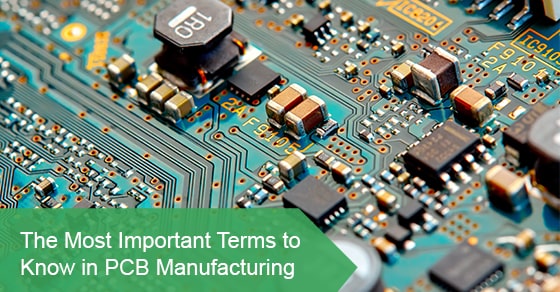The Most Important Terms to Know in PCB Manufacturing
There are many terms in printed circuit board (PCB) manufacturing that you should be aware of before you decide to enter the PCB manufacturing industry or market. For example, a high potential test in Waterloo is also known as a dielectric withstand test.
A high potential test is often abbreviated as a hipot test, and checks for good isolation. A high potential test will test to ensure that no current will flow from one point to another. A hipot test is the opposite of a continuity test, which checks to ensure that current flows optimally from one point to the next. In fact, hipot testing often involves turning up the voltage to a very high level to ensure that there is no current flow or leakage.
Here, we will discuss many other important terms that you should know inside and out before you enter the PCB manufacturing sector.
Active Components
An active component is a type that is heavily dependent on the directional flow or pull of an electrical current. Examples of components that are classified as active include valves, rectifiers, and transistors.
Analog Circuit
Here, we are referring to circuits processing analog signals, which are either variable or continuous in nature. It should also be noted that the output for analog circuits is non-binary in nature.
Annular Ring
The annular ring is the copper pad area that remains after a deep hole is drilled into the unit. The annular ring is measured from the hole edge to the pad edge. It is also considered essential in printed circuit board design and manufacturing. Without it, there would be no feasible way to allow for an electrical connection to be made from one side of the opening to the other.
Automated Optical Inspection
Automated optical inspection, as the term implies, is an inspection method that is used to detect problems regarding soldering performance. It is commonly used to inspect multi-layer printed circuit boards that have numerous components mounted on them.
Automated optical inspection involves state-of-the-art equipment that captures images of the inner surfaces of the printed circuit boards. Using the images, the equipment will look for various different issues, including polarity and displacement problems.
Aspect Ratio
The aspect ratio refers to the ratio between the minimum diameter of the printed circuit board and its thickness. Aspect ratios should be kept low if possible, as doing so will reduce the risk of failure. A lower aspect ratio will also help improve the quality of the plating.
Assembly
The assembly refers to the process or series of procedures where accessories and components are placed on a printed circuit board. If performed correctly, a functional board will be the end result.
Assembly Drawing
An assembly drawing serves as a reference that depicts the various assembly requirements of a printed circuit board. The assembly drawing will often outline the placement of all of the components of the board, as well as the parameters, methods, and technology needed in order to bring everything to fruition.
Assembly House
An assembly house is essentially the facility where the printed circuit board and its various components will be manufactured. Most assembly houses will include all of the machinery and equipment needed to manufacture PCBs, including reflow ovens, mounters, and printers.
Back Drilling
Back drilling is commonly used for multi-layer printed circuit board fabrication projects. Back drilling involves removing stubs from holes that are plated through. This helps enhance signal integrity.
The stubs that are removed consist of portions that are superfluous. The stubs extend into the hole and often cause disturbances, such as reflections, that can damage signals. Removing the stubs will eliminate many such disturbances.
BGA
BGA is short for “Ball Grid Array”, and is a form of packaging for components. It is commonly used in many integrated circuits for surface-mounting purposes. BGAs have many benefits, such as using columns of balls instead of pins.
As a result, BGAs ensure very high-speed efficiency without compromise. BGAs are frequently used in order to mount many popular devices, including microprocessors, onto printed circuit boards in a permanent manner.
Board
Here, a board is considered a shorter term for a printed circuit board, or PCB. The word also refers to the substrate upon which the printed circuit board is printed. The board serves as an essential electronic component. Without it, there would be no electrical carrier for a connection between the various components.
Board House
A board house is the factory or facility that is used in order to manufacture top-of-the-line printed circuit boards.
Board Type
A board type can be panel-based or single-unit based. A board type refers to the fabrication method of a PCB in terms of sheer volume. In regards to single-unit fabrication, the printed circuit boards will be manufactured one by one. As for panel-based fabrication, it involves the manufacturing of several printed circuit board units in a single panel.
Body
The word “body” is used in the PCB industry to refer to the central component of an electronic component. It is only used to refer to the central section, and does not involve the accessory parts, leads, or pins of the component.
Buried Resistance Board
When a PCB has resistors that are buried deep within it, the term “buried resistance board” is used. This design approach will help enhance the integrity of components that are resistant, and will augment the reliability and functionality of the printed circuit board.
Circuits Central
If you would like to learn more important terms that are commonly used in the PCB manufacturing industry, then please visit our website. We specialize in post-manufacturing testing and development, which includes automated optical inspection, x-rays, thermal cycling, and burn-in.
We also provide leading-edge functional, in-circuit, JTAG, environmental stress, single-sided flying probe, and double-sided flying probe testing. We can be reached at 1-888-821-7746 if you have any questions about our pre-manufacturing, manufacturing, and post-manufacturing PCB products and services.

